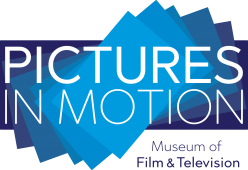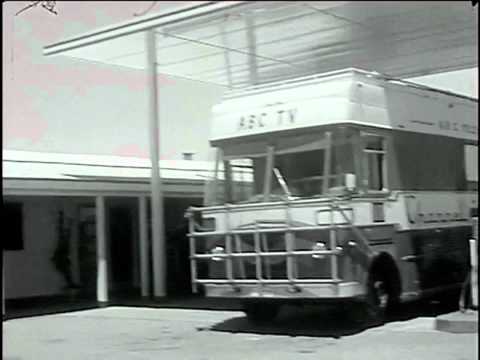1959 – 2017 WA Television Timeline
In many ways there has been a merging of the technologies as computers, the internet and digital technology reshapes the landscape. Younger generations no longer have a connection to the printed word that their parents experience. Emailing replaced letter writing, then social networking, online chat, forums, blogs, twitter and SMS messaging revolutionised communications.
We now find that the Global internet giants are crushing Australian media.
Newspapers, Television and to a lessor degree Radio are having the life squeezed out of them by the giants of the digital age, such as Google, Facebook and Instagram.
In 2018, the global media/technology players are expected to take a 35-40 per cent share of the total pool of approximately $14 billion in Australian ad revenues.
Now Netflix plans to make more movies than all the major Hollywood studios combined. This comes at a time when box office receipts are in decline, and the DVD publishing of films that traditionally supported the studios is drying up.
The Free to Air networks are fighting back against streaming services like Netflix by slackening the Commercial TV code, which was drafted by the networks, and has now been approved by the Australian Communications and Media Authority (ACMA).
Roy Morgan data, released in September 2017, that there is estimated to now be more than 7.6 million Australian Netflix users. Meanwhile, Netflix was recruiting some of TV’s most successful producers and writers with the aim to become the world’s largest creator of entertainment.
In 2016, Netflix released an estimated 126 original series or films, more than any other network or cable channel.
2015 Last Seven Perth News from the Dianella Studios Sunday 22nd February, 2015.
By January 2016, Netflix was available in over 190 countries.
2015 Nine Perth’s 50th Birthday
2015 Rick Ardon and Susannah Carr celebrate 30 years reading Seven News together.
2014 Coralie Condon, the Grande Dame of Perth theatre and the First Lady of Western Australian Television, died peacefully at Castledare Nursing Home on 24 December, 2014, aged 99.
2013 Netflix entered the movie and television production business.
2010-2011 the demolition of the former ABW Channel 2 Television studios in Perth, Western Australia.
Demolition of ABW Channel 2 Studios in Perth WA
Between 2010 and 2013, Digital replaced Analogue PAL TV transmissions in Australia.
54 Years of Analogue TV – the End of an Era
2010 The Australian Broadcasting Corporation launched Australia’s first free-to-air 24-hour television news channel.
2010 ABW Channel 2 turned Fifty.
2009 TVW Channel 7 turned Fifty.
Meanwhile, cinemas were addressing the new challenges by introducing digital and 3D projection and luxury viewing facilities with food and beverage catering.
STW Channel 9 Station Tour in 2008
52 years of TV in Australia 1956 to 2008
2008 TV shows first appear in the Australian iTunes Store. At first only US ABC Studios, Australian Broadcasting Corp, Disney Channel, Nine Network and MTV were available for purchase and download.
2008 Introduction of ABC iView the video on demand and catch up TV service.
2007 The National Indigenous Television (NITV) began transmissions in July 2007.
2007 Netflix expanded its business with the introduction of streaming media.
In June 2007, STW Channel 9 shareholders approved the sale of the station to 45% shareholder WIN Corporation for $163.1 million.
2005 The ABC moved from their Adelaide Terrace studios to to Fielder Street, East Perth. They had been in Adelaide Terrace from 1960, which coincided with the launch of ABC television in WA.
Former ABC Site in Perth (1960-2005)
2001 Digital terrestrial television in Australia homes commenced on 1 January 2001, in Sydney, Melbourne, Brisbane, Adelaide and Perth.
1999 Community television was introduced to WA with Access 31 in Perth.
1997 Netflix an American multinational entertainment company was founded on August 29, 1997, in California, starting in the DVD by mail business.
The DVD player was launched in 1997 and had only reached 13% penetration by 2001.
1990 TVW Behind the Scenes
In 1995, Kerry Stokes acquired a dominant stake in the Seven Network (initially around 20% but subsequently increased to over 40% through purchases and share buy-backs).
During the 1990s the first subscription television services were introduced to Australia. The first license was issued to Galaxy Television, which started in 1993, providing services to most metropolitan areas by 1995. Other major providers include Foxtel, Optus Television and AUSTAR, all of which were introduced in 1995.
From June 14th 1991, SBS TV was permitted by the government to broadcast five minutes of advertising per hour, as a form of additional funding.
1989, Qintex collapsed after an unsuccessful takeover of the Hollywood film studio MGM/UA, that was repeatedly bought and sold by Kirk Kerkorian. The Qintex collapse left TVW in the hands of receivers.
1989 Bond Media sold STW Channel 9 to Sunraysia Television for A$95 million. Bond Media was forced to sell due to the Federal cross-media ownership laws, which restricted the level of national reach for media owners.
1988, Christopher Skase and his Qintex group bought TVW7 (Perth) and SAS (Adelaide) from Robert Holmes à Court.
1988 NEW Channel 10 opened on May 20, 1988. Former TVW co-founder Brian Treasure’s West Coast Telecasters (funded by Kerry Stokes and Jack Bendat) was the successful applicant, though the company was sold to Frank Lowy’s Northern Star Holdings before they went to air, as a result of a change in government policy. A number of key TVW management and staff were involved with the new channel. These included Bill McKenzie (Managing Director), Stuart Joynt (founding News Director), Marion Leyer (Director of Production) and Glenys Gill (Program Manager).
1988 The financial pressure placed on Robert Holmes à Court’s Bell Group eventually led to a takeover by Bond Corporation Holdings Ltd.
October 1987, the stock market crashed.
1987 Alan Bond bought two key Nine network stations TCN9 in Sydney and GTV9 in Melbourne from Kerry Packer.
1986 The introduction of a new, domestic satellite called AUSSAT, and by the end of 1986 the Australian Broadcasting Corporation was broadcasting both television and radio to remote areas of Australia.
1984 Television stereo sound broadcasting started officially in Australia in 1984, though test programs were broadcast earlier with programs such as ‘Hey Hey Its Saturday’.
1984 STW Channel 9 became the first station in Perth to broadcast 24 hours a day on 17 April 1984.
1983 The Australian Broadcasting Commission becomes the Australian Broadcasting Corporation.
1983 Alan Bond’s Bond Corporation bought a major share holding in STW 9.
1982 Robert Holmes à Court and his Bell Group bought full control of TVW 7.
1980 Cinema City movie theatre complex built by TVW Enterprises. Cinema City served the community for 27 years from 6th November 1980 to 17th October 2007.
1978/79 Jack Bendat and Kerry Stokes gained control of South West Telecasters (owner of BTW/GSW) and changed the company’s name to Golden West Network. (Golden West Network (GWN) is now a subsidiary of Prime Television Limited)
1978 Bob Hope Down Under TV Special
1977 to 1979 Kerry Packer’s World Series Cricket
1977 GTW11 Geraldton launched in 1977.
1975 When colour television was introduced, there were penetration levels of 1% in 1975 and 20% in 1976. It did not reach 50% until 1977.
1974 GSW10 Southern Agricultural (servicing Albany blind spot) launched August 1974 – translator on Mt Clarence in Albany (via Mt Barker)
In 1972 it was announced that all stations would move to colour television in 1975, which was officially introduced at midnight on March 1st 1975, using the European PAL standard.
1972 First Channel Seven Christmas Pageant.
1971 Disney on Parade in Australia (first of the big arena shows)
1971 VEW8 Kalgoorlie plus VEW3 translator at Kambalda (Red Hill) started in November 1971.
1970 A telecommunications micro-wave link crosses the continent, connecting the east to the west
1969 First Moon Landing
WA helped put a Man on the Moon
Engineering TVW7 in the 1960s and 1970s – Part 1 of 4
Engineering TVW7 in the 1960s and 1970s – Part 2 of 4
Engineering TVW7 in the 1960s and 1970s – Part 3 of 4
Engineering TVW7 in the 1960s and 1970s – Part 4 of 4
1968 First Channel Seven Telethon.
Channel Seven Perth’s Telethon anecdotes by Sir James Cruthers
1968 GSW9 Southern Agricultural (servicing Albany and Great Southern) launched 29 August 1968
TX at Mt Barker (co-sited with ABC)
1967 Our World – Pioneering Satellite TV Program Exchange
Our World was the first live, international, satellite television production, which was broadcast on 25 June 1967. 14 countries participated in the production that was transmitted to 24 countries with an estimated audience of 400 million people. The program was coordinated by the BBC in London. The Soviet Union and several other Eastern bloc countries pulled out a few days before the broadcast to protest the west’s support for the Six-Day War. Western Australia missed out on this live event, and had to be content to view a replay after the videotape was air freighted to Perth.
1967 BTW Channel 3 Bunbury launched 10 March 1967. TX at Mt Lennard (co-sited with ABC)
1966 First Australia to UK Satellite Hook-up
The historic first satellite telecast between Australia and England took place on Friday, November 25th, 1966. The ABC had a hook up with the BBC, whilst TVW Channel 7 hooked up with the UK commercial station ITN.
1966 Intelsat II Orbit Problems
First Australia to UK Satellite Hook-up in 1966
All Perth television stations started operations with the same brand of PYE telecine chains with Philips 16mm projectors and 35mm slide projectors. Caption scanners were also employed to display artwork on either postcard or A4 sized cards. Seven and Nine at first employed RCA videotape machines, whilst the ABC used the AMPEX brand. The first studio cameras used by Seven and Nine were PYE manufactured, whilst the ABC used EMI equipment.
1965 STW Channel 9 commenced full program broadcasts on June 12th, 1965.
1963 Television viewers in WA armed themselves to assist the police capture a fugitive Brian William Robinson after a police officer and a member of the public had been shot dead and that the offender had abducted a taxi driver in his taxi and was in the Gnangara Pine Plantation. Brian William was charged with 2 counts of wilful murder. Robinson was sentenced to death and hanged at Fremantle Gaol on 20 January 1964. TVW won the Television Society of Australia award for best “Television News Item – MANHUNT” in 1963
1962 The Commonwealth and Empire Games were presented in Perth.
1962 Videotape was introduced to both TVW-7 and ABW-2 in time for the 1962 Perth Games at Perry Lakes Stadium and Beatty Park pool.
TVW’s First Videotape Machine – RCA TRT-IB
1960 ABW Channel 2 opened on May 7th, 1960.
When TV began in WA the equipment was primitive by today’s standards. Almost everything was thermionic valve driven, bulky, power hungry and in constant need of adjustment and a higher maintenance risk. Each time TVW took the PYE image orthicon cameras out on an outside broadcast there was a high likelihood of component faults. TVW’s original RCA TRT-IB videotape machines required constant server alignment as did each videotape played.
The early black and white studio cameras were equipped with a turret of fixed focal length lenses with a selection of any 4 from the 2, 3, 5, 8 or 12 inch lenses available, and, maybe a small zoom lens with a ratio of 5-1 or 10-1. Turret Lenses were changed from one to the other by pressing a switch or, on earlier model cameras, by turning a handle.
The original Newsreaders at TVW Channel 7 as told by Darcy Farrell
TVW’s Opening Night Programs
1959 TVW Channel 7 opened on October 16th, 1959.
The origin of TVW Channel 7 as told by Sir James Cruthers
Documentary on the opening of TVW Channel 7 in Perth, WA




























